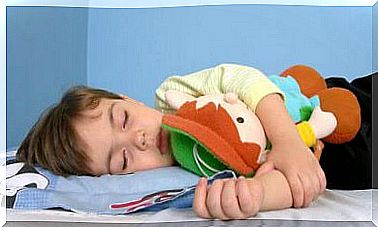The Benefits Of Napping For Children – Parenthood

The nap is a subject of debate. While for many families see it as a vital tradition, others have a rhythm of life that does not allow this rest. Below, we detail the benefits of napping for children.
Voices for and against the nap
Many claim that a nap is a basic necessity for children under 3 years old. In this way, they can compensate for the fatigue accumulated during the day. We therefore prevent them from arriving overwhelmed, agitated and irritated in the evening.
Regarding its duration, it is established that up to 6 months the ideal is to sleep between 3 and 4 hours. However, the nap can be a bit longer in the first few months of life. The average rest time decreases by one hour between 9 months and a year of life.
After two years, the little ones are advised not to take more than 2 hours of nap. This number is reduced by half an hour after 3 years. Finally, in from 4 or 5 years, this pause should not exceed one hour.
Can a nap be bad?
Others, however, point out its drawbacks, especially for children with trouble sleeping or breathing problems. The main reason is linked to too long naps. It can cause a headache and drastically affect nighttime rest.
5 great benefits of napping for children
In contrast to the comments above, there are many more benefits of napping for children. Here are the top five benefits:
1. Regain strength
In addition to the physical fatigue that can set in between morning and evening, this break during the day is very good for the minds of the little ones.
During the nap, a series of complex processes take place in the brain. These prepare them to incorporate new ideas. In addition, they consolidate what they have already learned.
Logically, the muscles also benefit from this break. Thus, after hours of adventures and games, the little ones will feel ready to satisfy their instinct of curiosity and research.

2. Improve their performance
Various research claims that, both academically and athletically, children who nap are generally more active and attentive than those who do not. Their main argument is that it decreases the feeling of fatigue and promotes cognitive performance.
3. Stimulate sociability
An essential characteristic of the nap is that it offers the possibility of improving mood, especially in the little ones. As a result, they will be more attentive, patient, and in a better mood during the day.
The result of this combination of positive consequences is greater (and better) sociability. It also has a reciprocal effect: no one likes having to deal with irritable and restless children, let alone other children.
4. It promotes growth
During periods of rest, the body produces what is called “growth hormone” called somatotropin. Obviously, it is essential for the growth of the young. In addition, during sleep, cardiovascular, respiratory and endocrine functions are regulated. It is a very productive rest for their organism, whose functioning never stops.
5. It promotes psychic well-being
All of the above mentioned benefits help promote body balance, thus contributing to well-being. And the mind is one of the most favored parties. In short, the nap allows:
- Improve memory
- To release stress
- To be in a better mood

Tips to encourage your child to take a nap
As a mother, there are some strategies you can use to help your children nap their naps. Here are some examples :
- Establish a routine and stick to it.
- Make sure the nap does not last too long.
- Prepare a calm and dimly lit environment. The stimuli will keep them from falling asleep.
- Do not put them to bed immediately after a meal. First, give them a few minutes to digest.
Now that you know the benefits of napping for children, you will surely consider implementing this healthy habit in your child’s life.
Beyond the fact that it will do him good, it will also help him take a little break and regain his strength. Courage, Mom!









